How ABA Therapy Supports Play Skills and Peer Interactions

Understanding the Role of ABA in Social and Play Development
Applied Behavior Analysis (ABA) is a proven, individualized approach that significantly promotes social and play skills in children with autism. By systematically breaking down complex social behaviors, ABA facilitates meaningful interactions, helping children develop essential skills for engaging with peers and participating confidently in social environments. This article explores the diverse strategies and techniques ABA leverages to support social development and enhance peer relationships.
Decomposing Social Skills for Effective Learning
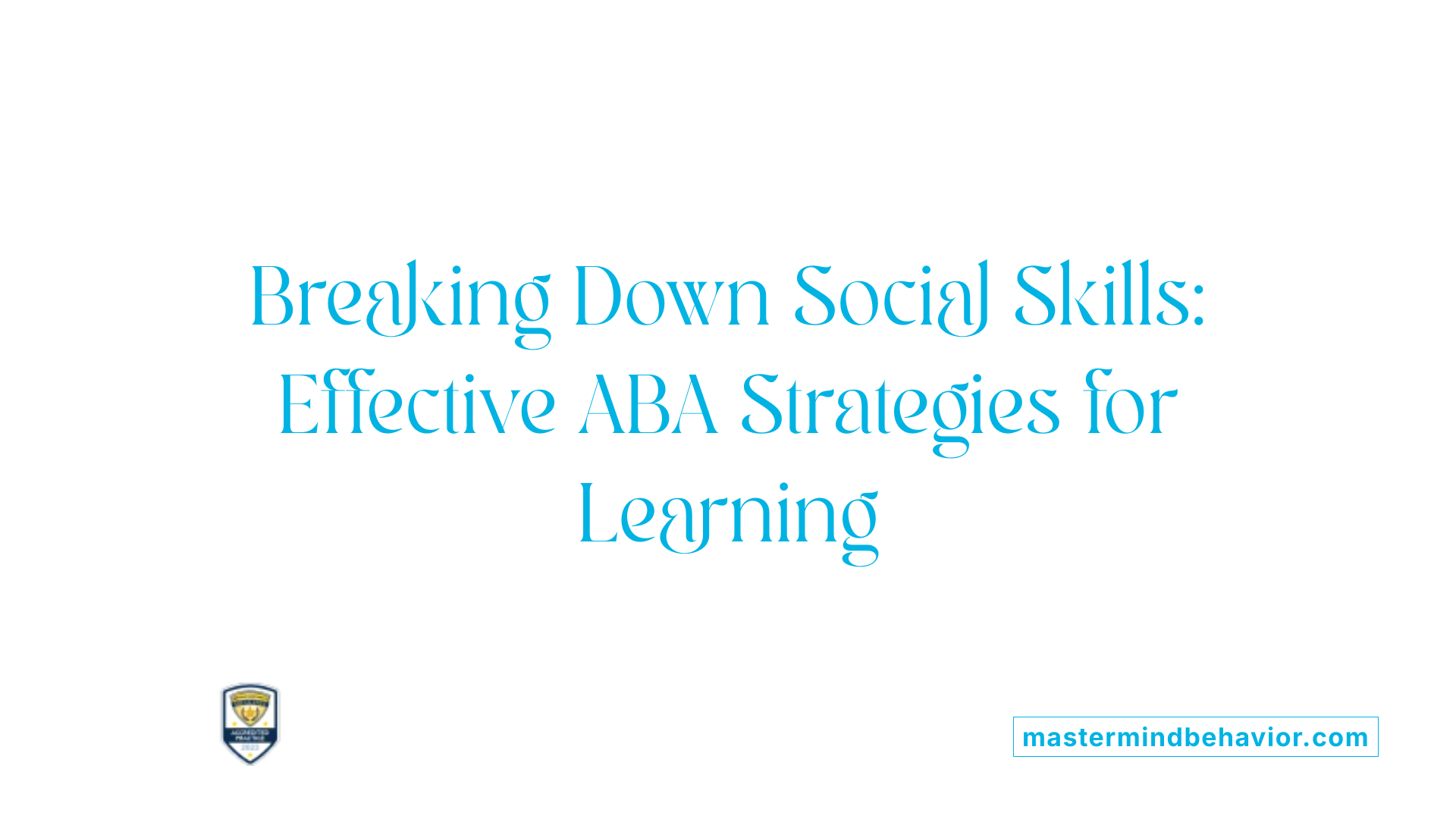
Breaking social behaviors into manageable components
Applied Behavior Analysis (ABA) employs a systematic approach to teach social skills by breaking complex behaviors into smaller, manageable parts. This decomposition makes it easier for children with autism to understand and learn each step effectively. For example, initiating social interactions involves recognizing social cues, approaching peers, and using appropriate greetings.
In addition, ABA focuses on fundamental actions such as sharing toys and taking turns. These behaviors are practiced through structured activities and reinforced consistently, fostering confidence and routine in social exchanges.
Teaching fundamental social skills like initiating cues and sharing
A core focus of ABA therapy is enhancing skills like initiating conversations and sharing. Therapists teach children how to recognize social signals such as facial expressions and body language that indicate others' feelings or intentions.
Visual supports, such as picture schedules and social stories, help children understand and enact appropriate social behaviors. Through role-playing and interactive games, children practice these skills repeatedly in a safe setting, gradually gaining independence in real social situations.
Helping children interpret facial expressions and social signals
Interpreting social cues is crucial for successful peer interactions. ABA strategies incorporate activities that improve children’s ability to recognize facial expressions, body language, and social signals.
Structured experiences, including matching games with facial expressions or observing peer behaviors, enable children to enhance their social understanding. Repetitive practice helps generalize these skills outside therapy, making social interactions more meaningful.
How ABA improves social and play skills
ABA therapy offers numerous benefits in developing social and play skills in children with autism. It utilizes evidence-based techniques such as positive reinforcement, modeling, role-playing, and natural environment training.
These methods promote meaningful social interactions, teaching children how to initiate conversations, interpret social cues, and share during play. The therapy’s personalized nature allows for breaking down complex skills into small steps, with consistent reinforcement building independence and confidence.
Improved communication and language abilities are closely linked to enhanced social and play skills. As children learn to express themselves and understand others, their ability to participate in joint activities and form friendships increases, contributing to their overall well-being.
How does ABA support play skill development?
ABA supports play development through structured play-based techniques designed to match the child's interests. This approach encourages communication, social interaction, joint attention, and sharing.
Therapists often incorporate storytelling, puppetry, and art activities that are engaging and educational. Reinforcement strategies motivate children to participate and practice new skills, which are then generalized across settings.
Following a data-driven, individualized plan, ABA helps children reduce anxiety, boost motivation, and improve emotional regulation, making play both enjoyable and developmental.
Improving social interactions and peer relationships
ABA therapy significantly enhances social and peer relationships for children with autism by teaching foundational skills like eye contact, turn-taking, and joint attention.
Role-playing, social stories, and video modeling provide practical contexts for children to practice and internalize these skills. Positive reinforcement encourages ongoing behavioral improvements.
Group activities and peer-mediated interventions foster real-world social engagement and relationship building. Addressing broader skills such as self-advocacy adds to children’s confidence and ability to navigate social situations.
Overall, ABA’s structured and individualized approach develops lasting social skills, supports meaningful peer interactions, and promotes an inclusive social environment, enhancing the child's quality of life.
Using Play as a Foundation for Social Development
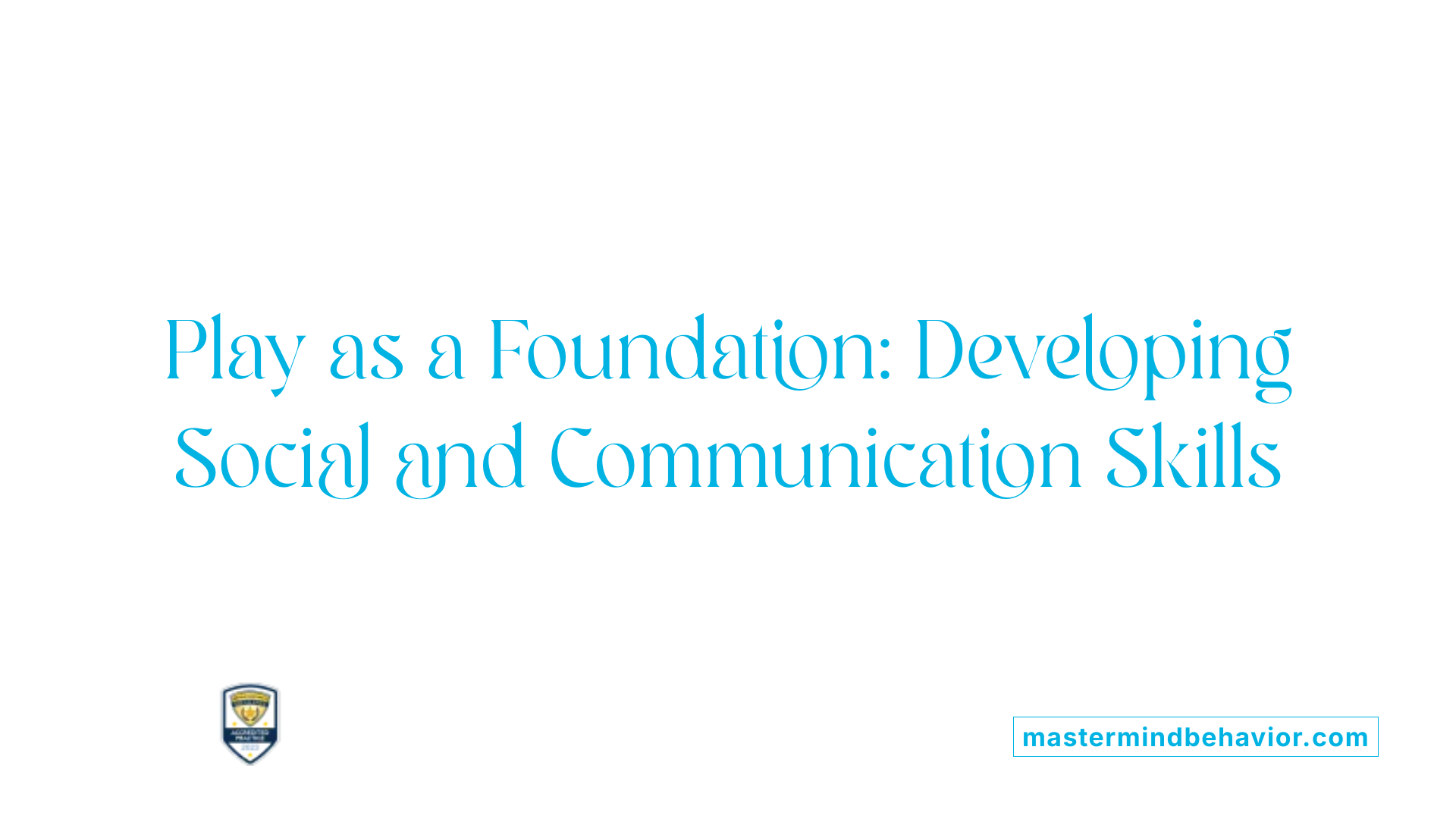
How does ABA therapy support the development of play skills in children with autism?
ABA therapy plays a vital role in helping children with autism develop essential play skills. Therapists utilize engaging, play-based techniques that align with each child's interests and natural inclinations. They incorporate a variety of play types, such as structured play, free play, and sensory play, to teach crucial social and communication skills.
Through these methods, children learn to share, take turns, and initiate interactions. Activities like storytelling, puppetry, and art are often used to make play more engaging and educational. Reinforcement strategies—such as praise or tokens—motivate children to participate and improve their skills.
Data collection and individualized planning ensure that each child’s progress is tracked and adjusted as needed. This personalized approach helps children generalize their skills across different settings, from therapy to school and community environments.
Play-based ABA also reduces anxiety by creating a safe, stimulating space for exploration and learning. When children enjoy their play sessions, they are more motivated to practice social and emotional skills, leading to better developmental outcomes. Involving caregivers in these activities further enhances progress, making play a core element of ongoing social development.
Enhancing Peer Interactions through Structured Activities

How can ABA therapy improve social interactions and peer relationships for individuals with autism?
ABA therapy plays a vital role in boosting social skills and peer relationships in children with autism. It does this by teaching essential social behaviors like making eye contact, taking turns, sharing toys, and responding to social cues. These skills are broken down into simple, manageable steps, making it easier for children to learn and practice.
Structured group activities, including organized games and routines, create predictable and safe environments where children can practice interacting with peers. These settings help children feel more comfortable, reducing anxiety and encouraging participation. For example, routines using visual schedules can guide children through expected behaviors during play, making social interactions clearer and more manageable.
Visual cues such as picture charts, color-coded activity schedules, and timers are very effective in facilitating turn-taking and sharing. They provide visual reminders of the expected behaviors, helping children understand when it’s their turn or how to share toys. Positive reinforcement techniques like praise or tokens motivate children to engage in social behaviors, reinforcing their learning.
Peer-mediated interventions are another powerful component of ABA, involving training peers to model and promote appropriate social behaviors. This approach fosters inclusive environments where children with autism can naturally observe, imitate, and practice social skills alongside their peers.
Creating an inclusive social environment is essential. Interventions focus on collaboration among therapists, educators, and families to reinforce social behaviors and encourage acceptance. When children see and interact with peers in structured but natural settings, they develop stronger social connections and improve their ability to navigate social situations.
Research in the field emphasizes that these structured activities, complemented by visual supports and positive reinforcement, significantly enhance social engagement. This comprehensive approach provides children with autism opportunities to develop meaningful and lasting peer relationships, ultimately improving their overall social confidence and quality of life.
| Approach | Description | Additional Detail |
|---|---|---|
| Structured Group Activities | Organized games and routines teaching cooperation and shared responsibilities | Designed to promote communication, listening, and empathy |
| Visual Cues and Reinforcement | Use of visual supports like picture schedules and timers to guide behavior | Reinforced with praise, tokens, or rewards |
| Peer-Mediated Interventions | Training peers to facilitate social interactions | Foster inclusive and natural social settings |
| Family and Educator Involvement | Reinforcing social skills outside therapy | Encourages generalization of skills |
These strategies collectively aim to create a supportive environment where children with autism can thrive socially, develop friendships, and gain confidence in their peer interactions.
Fostering Inclusion and Generalization of Skills
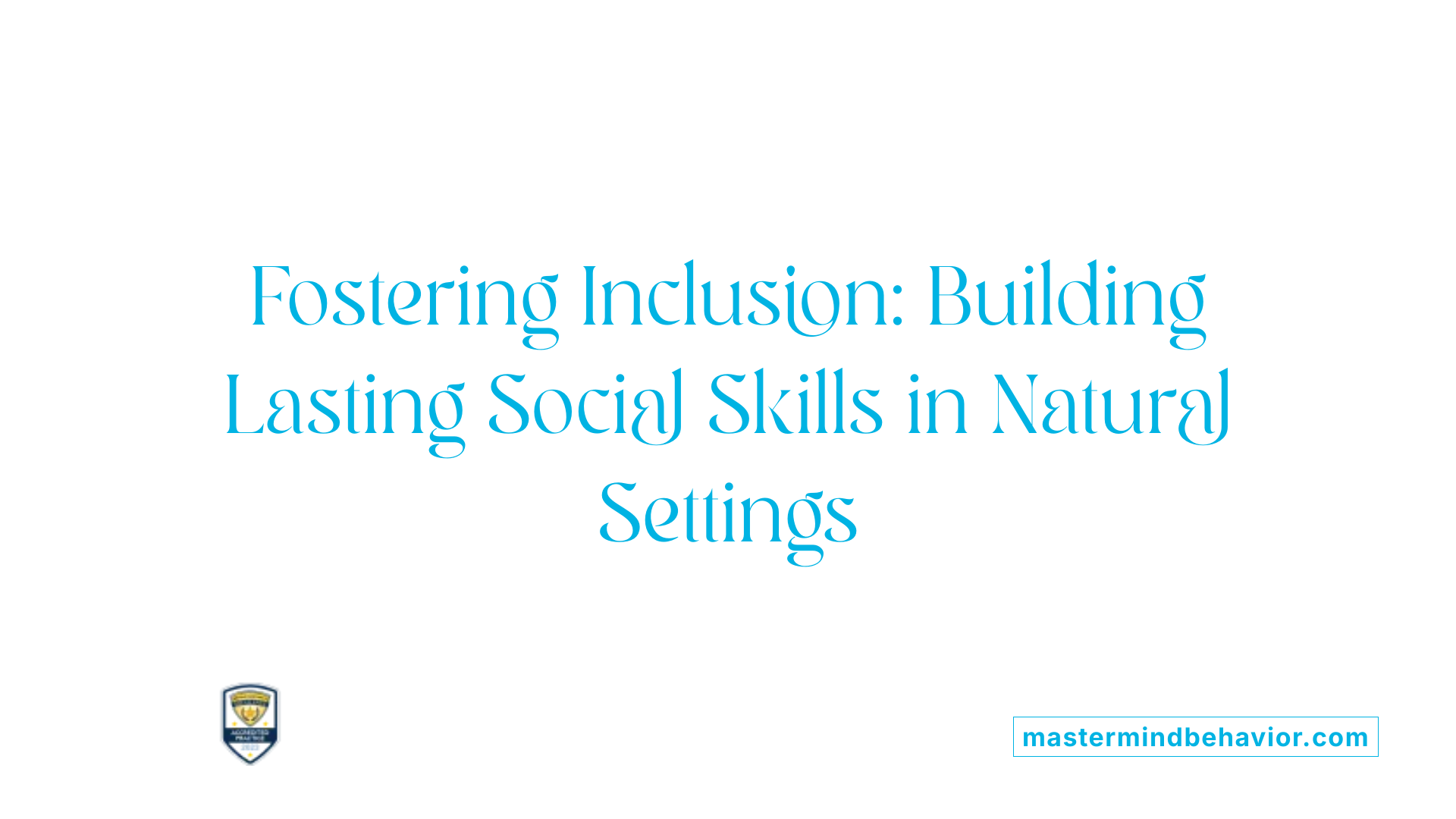
What strategies are used in ABA therapy to foster social engagement and improve social skills?
ABA therapy employs a variety of strategies to enhance social interaction abilities for individuals with autism. Central to these are techniques such as social skills training, role-playing, modeling, and the use of social stories. These methods help break down complex social behaviors into manageable components, making it easier for children to learn and apply new skills.
Positive reinforcement plays a crucial role in motivating children to engage in desirable behaviors. Therapists praise children for sharing toys, taking turns, or initiating conversations, creating a supportive environment conducive to learning. This reinforcement can include verbal praise, tokens, or other rewards that motivate continued practice.
Structured activities are designed based on each child's interests and developmental level, ensuring engagement and relevance. These might include organized group games or routines that establish clear expectations, helping children feel more comfortable and confident during peer interactions.
In addition, ABA focuses on facilitating the generalization of skills learned during therapy sessions to spontaneous, everyday settings. This means children can apply their social skills in school, community outings, or family environments, which is essential for meaningful social integration.
Collaboration among ABA practitioners, educators, and families is vital. Coordinated efforts reinforce social behaviors across different settings, providing consistency and continuity that bolster a child's social development.
Moreover, systematic progress monitoring allows therapists to track improvements and adjust interventions accordingly. This personalized approach ensures that each child's social growth is supported effectively and sustainably.
The importance of natural settings for social skill generalization
Fostering social skills in natural environments like school or community settings enhances real-world applicability. These settings offer authentic opportunities for children to practice and refine their social behaviors, such as initiating conversations or understanding social cues in dynamic interactions.
ABA programs incorporate social play and peer interactions in these settings, which promotes skills like turn-taking, sharing, and understanding facial expressions and body language. Family involvement is also critical here; parents and caregivers are encouraged to model appropriate behaviors and create intentional opportunities for social engagement.
The role of collaboration among practitioners, educators, and families
A collaborative approach ensures consistency and reinforcement across different contexts. ABA therapists work closely with teachers and family members to develop individualized strategies that align with the child's needs.
Regular communication and shared goals help create a supportive network that encourages children to apply their social skills beyond therapy sessions. Family training on reinforcing behaviors and facilitating social opportunities is fundamental.
Strategies for promoting peer acceptance and positive social environments
Promoting peer acceptance involves educating peers about autism to foster understanding and empathy. Inclusive activities, such as cooperative games and group projects, help integrate children with autism into peer groups.
Creating positive social environments includes designing activities that promote shared responsibilities and mutual respect. Visual supports like charts and timers assist in managing turn-taking and sharing, reducing anxiety and promoting cooperation.
Role-playing and social stories prepare children for social interactions, reducing uncertainty and increasing confidence. Celebrating progress and encouraging inclusive play further nurture a sense of belonging.
By combining these strategies, ABA therapy not only develops social skills but also fosters an environment where children with autism can thrive socially, leading to better friendship opportunities and overall well-being.
| Strategy | Purpose | Example |
|---|---|---|
| Social skills training | Teach specific behaviors | Practicing initiating conversations |
| Role-playing | Simulate real social scenarios | Playing store or restaurant |
| Positive reinforcement | Motivate and reward behavior | Verbal praise or tokens for sharing |
| Natural environment practice | Promote real-world application | Group activities at school |
| Family involvement | Reinforce skills at home | Role-playing social situations |
| Peer education | Foster acceptance | Teaching classmates about autism |
| Visual supports | Clarify expectations | Picture schedules for turn-taking |
| Inclusive activities | Promote cooperation | Cooperative games and group projects |
This multi-faceted approach ensures comprehensive support for developing social skills, emphasizing natural practice, collaboration, and inclusive environments.
The Role of Family and Community in Success
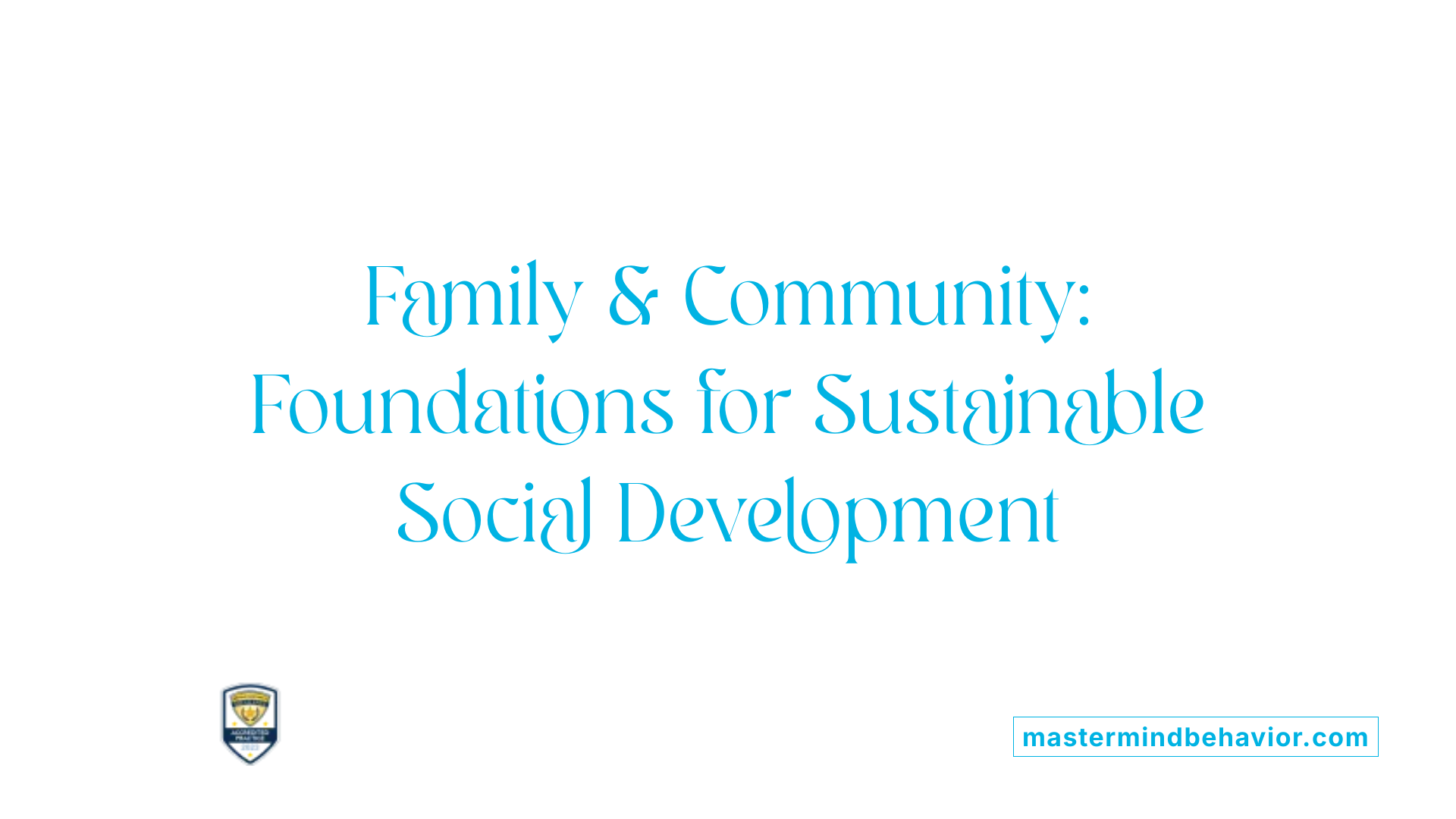
How can ABA therapy improve social interactions and peer relationships for individuals with autism?
ABA therapy is a proven approach that helps children with autism develop critical social skills necessary for meaningful interactions. By breaking down complex behaviors like eye contact, turn-taking, and interpreting social cues into manageable steps, ABA allows children to learn these skills effectively.
Structured activities such as role-playing, social stories, and video modeling provide practical contexts for practicing social behaviors. For example, a child might practice initiating conversations or sharing toys in a safe, guided setting. Positive reinforcement—like praise, tokens, or rewards—encourages children to repeat these behaviors, gradually increasing their confidence and competence.
Peer-mediated interventions and group activities foster opportunities for children to interact naturally with others. These settings help children generalize learned skills beyond therapy sessions, applying them in real-world environments like school or community outings. As children become more adept at understanding facial expressions, body language, and social signals, they build stronger peer relationships and enjoy more inclusive, rewarding social experiences.
In addition, ABA strategies also support broader social-emotional development, including self-advocacy and emotional regulation. By consistently practicing these skills, children with autism gain the confidence needed to participate actively in social situations, form friendships, and integrate into their communities.
Overall, ABA’s structured, personalized approach creates a comprehensive framework for enhancing social interaction and fostering positive peer relationships, promoting a sense of belonging and social inclusion.
Fostering Independence and Social Confidence
ABA therapy not only equips children with autism with essential social and play skills but also builds their confidence and independence. By providing a structured, supportive environment tailored to the child's interests and needs, ABA promotes skill generalization across various settings and with different people. The active involvement of families and collaboration with educators further reinforce these gains, fostering inclusive communities where children with autism can thrive socially. Ultimately, ABA's comprehensive strategies help children develop meaningful peer relationships and participate fully in social life, significantly enhancing their quality of life and opportunities for future growth.
References
- Peer Play: Facilitating Positive Social Interactions for Autism
- How ABA Therapy Supports Social Skill Development
- Peer Play in Cleveland ABA Therapy
- How Early Intervention ABA Therapy Uses Play To Teach
- ABA Therapy's Impact on Peer Interaction and Communication
- Social Skill Growth Through Peer Interaction - Scottsdale PBS
- The effectiveness of applied behavior analysis program training on ...
Recent articles

Strategies For Building Peer Relationships Through ABA Social Skills Training
Building Meaningful Peer Connections with ABA-Based Social Skills Training
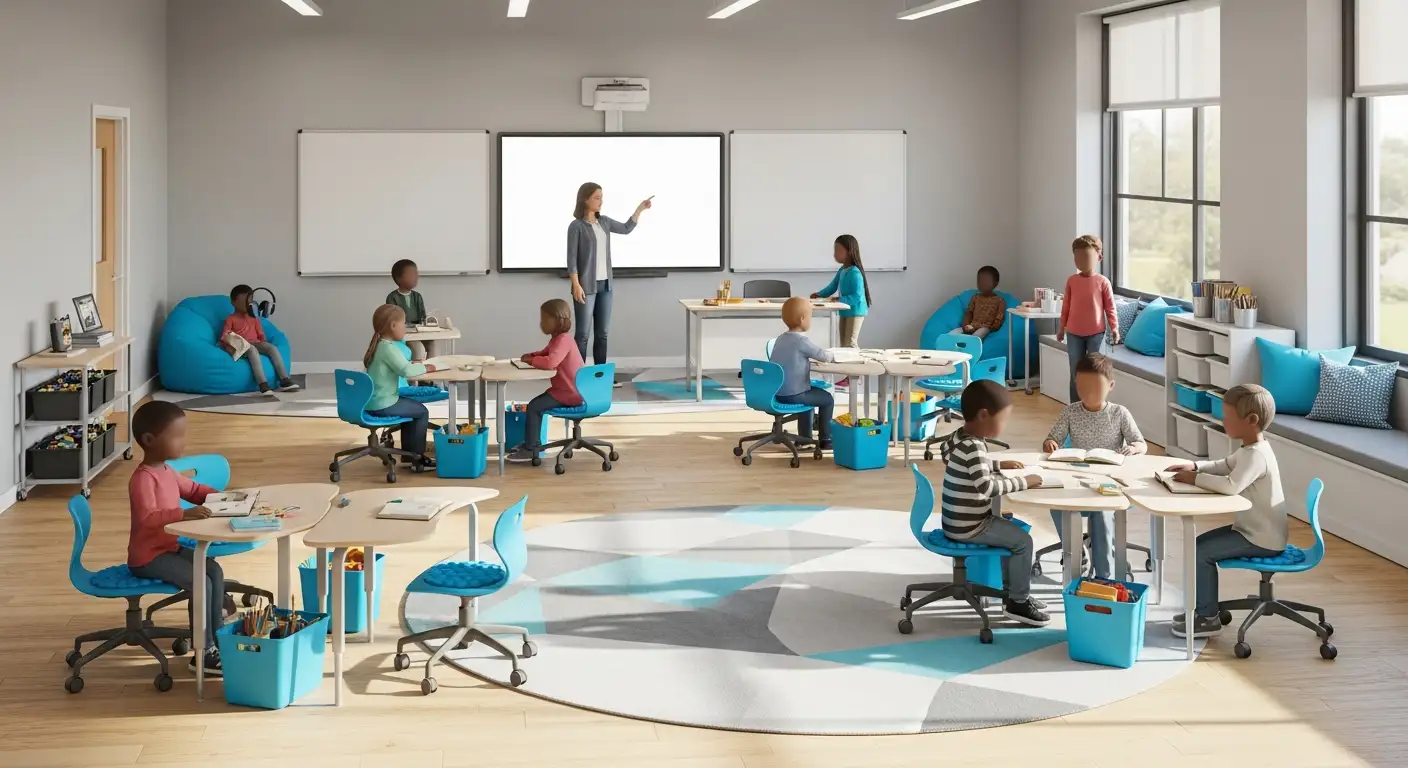
How ABA Therapy Improves Communication With Teachers And Peers
Empowering Social Connections: The Role of ABA Therapy in Autism

How ABA Therapy Encourages Teamwork And Cooperation Skills
Unlocking Social Success: The Role of ABA Therapy in Fostering Teamwork and Cooperation

Teaching Coping Skills For Test Anxiety Through ABA Therapy
Harnessing ABA Therapy to Equip Children with Autism Against Test Anxiety

ABA Therapy For Supporting Flexibility In Changing Schedules
Navigating Change: ABA Therapy as a Lifeline for Flexible Routines

How ABA Therapy Improves Coping During Times Of Transition
Navigating Change with Confidence: The Role of ABA Therapy



